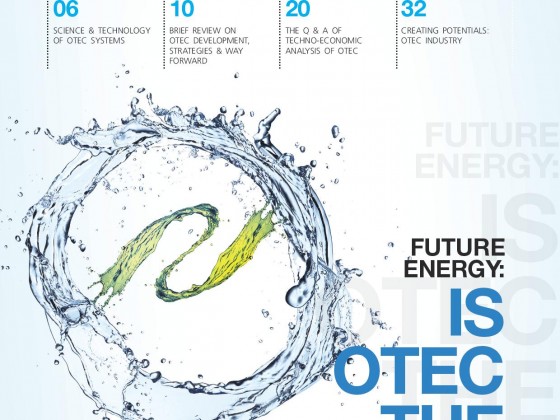Now, the question is… Is OTEC suitable for Malaysia? Read through and you be the judge…
by | Rushdi Abdul Rahim | rushdi@might.org.my
Greetings and Salutations!
We here at myForesight® have been very busy indeed. Our works with United Nations Development Programme (UNDP) and the Malaysia Public Service Department (JPA) is entering its final phase. We believe, for the country to move forward policy makers should be equipped with the tools to undertake foresight and that is what our work with them is all about. Therefore the collaborative aspect of the work becomes very critical in ensuring that the project achieved its targeted objectives.
On technology front, we continue to scan and engage various stakeholders, exploring future possibilities and in this particular issue, we at myForesight® are encouraging conversation and dialogue on the potential of Ocean Thermal Energy Conversion (OTEC). This special partnership edition of myForesight® is in collaboration with Universiti Teknologi Malaysia (UTM), is a compilation of viewpoints and opinions on OTEC technology.
For the 11th Malaysian Plan, renewable energy (RE) is expected to generate 2,080MW by 2020 (it was 243 MW in 2014) and contributes 7.8% of total installed capacity in Peninsular Malaysia and Sabah. The plan will enhance RE development by promoting new RE sources, enhancing capacity of RE personnel and implementing net energy metering.
There is a firm belief, especially by contributors to this edition that new RE sources such as wind, geothermal and ocean energy will be explored. Malaysia should take an advantage of its geographical position which is surrounded by the sea to leverage on ocean energy especially OTEC, since it is clean, sustainable (24/7) and can produce by products such as fresh water, aquaculture and agriculture.
Nevertheless, OTEC has long been stigmatized with high capital costs compared to other renewable energy such as solar, wind and even nuclear power. This has made OTEC a less attractive proposition. However, the contributors here opined that with the trends of higher energy generation cost, increased concern for global warming and political commitment towards energy security, OTEC technology will be economically attractive.
Now, the question is… Is OTEC suitable for Malaysia? Read throughand you be the judge.
I would strongly suggest that you make yourself available on the 1st and 2nd of September to continue the discussion on whether OTEC is the solution for our future renewable source of energy.
Perhaps an answer could be found during the 3rd International OTEC symposium, held in Royal Chulan, Kuala Lumpur during the dates I mentioned.
As always, we welcome input, opinions and article contributions. Thank you.









